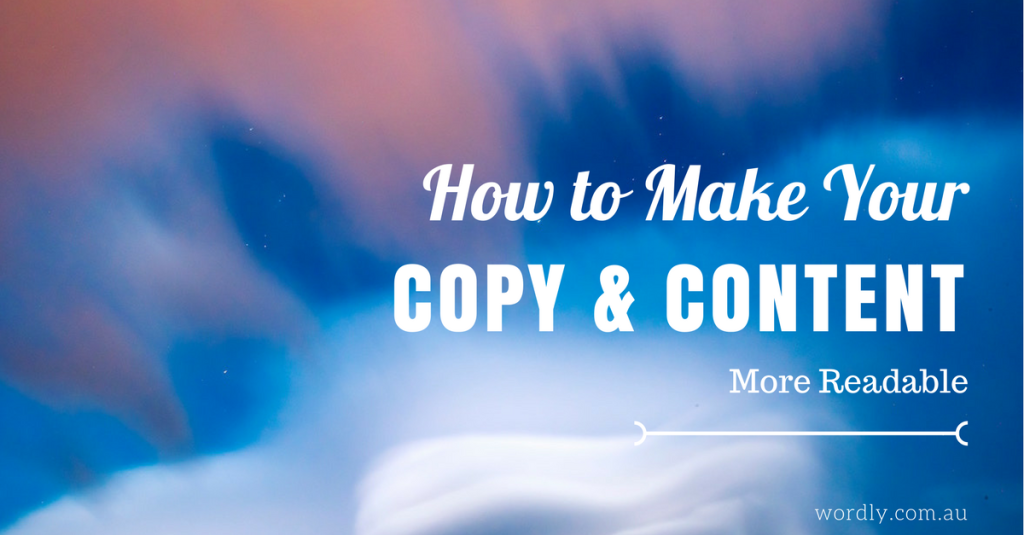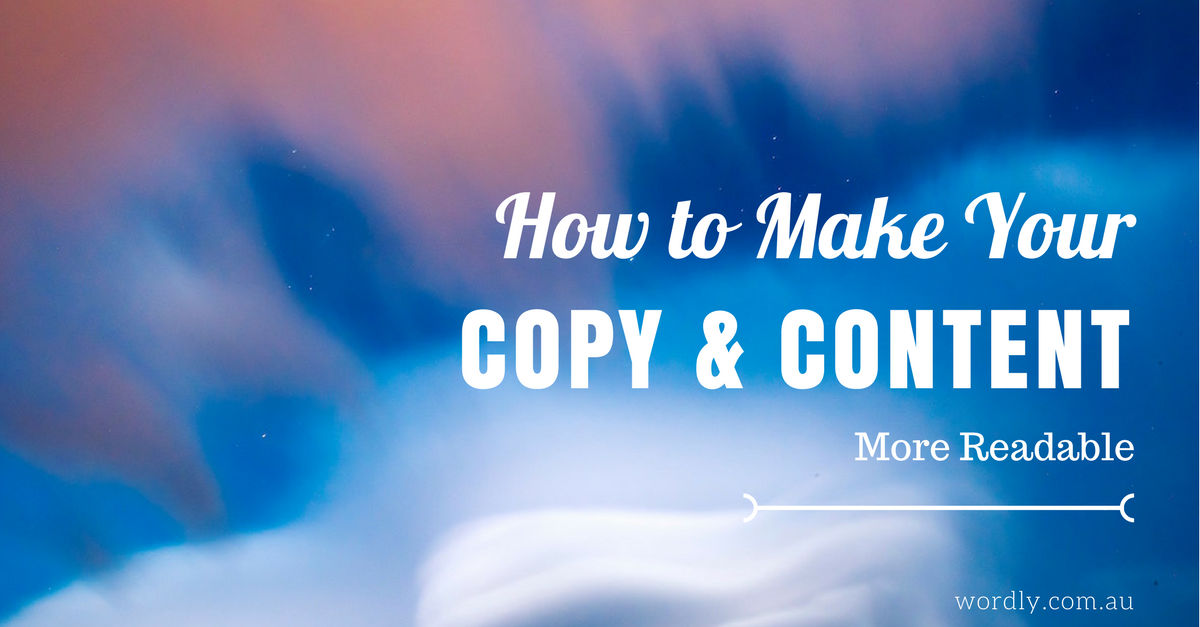So, you know how to create SEO-optimised content, that will rank well in Google. You know how to measure it for hits, click-throughs and shares. But is your content actually readable? It seems like a simple question, but with so much focus on SEO, the more delicate art of creating readable content has been left behind.
Readable content ensures your readers stay on the page, which increases the chance they will take the desired action.
So, how do you increase the readability of your content?

Choose the Right Tone
Content creators are chameleons. They work for fresh-faced start-ups one day and established law firms the next. When creating content, you have to make sure you’ve chosen the right tone for the audience.
If you’re writing for a younger audience, use a casual, conversational tone and don’t be afraid to use colloquialisms. If you’re writing for an older audience, or for a technical or scientific publication, you need to choose the tone to match. The best way to do this is to listen to the way the client speaks, chances are, you’ll have a fair idea of the tone you need.
Pay Attention to Headlines
Headlines are essential. In the age of smartphones and social media, people make snap decisions about what they will and won’t read. The headline itself is the most important way to grab attention and make your copy more readable. In fact, headlines are so important that they are now called, ‘click bait.’
Your headline needs to compel the reader to click on your article. Anyone that reads most of their content through the social media lens will understand that the headline is usually more compelling than the content itself. That’s how important it is.
Read Tools to Create Awesome Headlines to sharpen-up your headline game.
Make Sure Your Content Lives Up To Its Promise
Click-bait headlines are becoming the norm, but good content creators understand they are not the way to create quality copy. Make sure the body of your text fulfils the headline, as well as any other promises you make. Don’t use the headline ‘The Ultimate Guide to Dog Breeds’ if you’re only going to discuss five breeds.
Imbue Your Copy with Value
Readers have to get something out of the text for it to be readable. Ensure everything you write offers the reader something valuable. Even copy aimed purely at selling something should be informative. The best way to market value is to include the value proposition as early as possible, and then exceed it.
How Long is Your Content?
The length of the content has a lot to do with readability. Overly-long copy can scare readers away, but if it’s too short, it lacks credibility. Material has to be at least 300 words long for SEO purposes. If you’re writing a blog, it should be at least 800-words, while pages for the web can be a little shorter.
Of course, you can go for more extended content, if the topic merits it. The worst thing you can do is set a target of 1,500 words and spend 700 waffling on or repeating yourself. Choose the theme, research it and then let the final results dictate the length.
Use Imagery!
Readability isn’t all about text. People ‘read’ images, and they love doing it. By including pictures and videos in your content, you don’t just add visual interest; you also add context and a whole new depth of information. There are some things words can’t express, so use visuals!
Focus on Economy
Long sentences and paragraphs are always a mistake. Crisp sentences in short paragraphs are always the preferred stylistic choice when it comes to creating content. Five lines should be the absolute maximum per paragraph. Keep sentences short by using a full stop instead of commas wherever possible.
Think About Formatting
Imagine you open a blog or a webpage, and you scan down and see page after page of unbroken text, chances are you’ll quickly hit the back button. On the other hand, if you see a title, followed by an introductory paragraph or two and some nice subheadings, it looks a lot more inviting.
You should also use bullet points where appropriate.
Don’t Forget The Conclusion
A lot of copy has a great beginning and middle, and no end. The conclusion should provide the reader with a takeaway. Whether that’s neatly summing up the content or providing links to other resources, you need to make the most of the end section because it’s your last chance to make a lasting impact.
When creating content or copy, remember your first role is to make it enjoyable, and that means making it readable. You’ll be amazed by how quickly things like SEO take care of themselves when you focus on creating quality, readable content.



